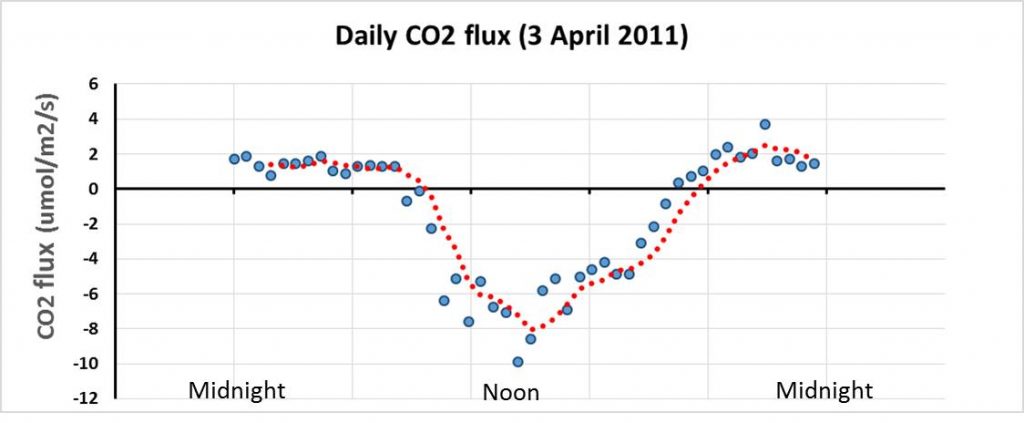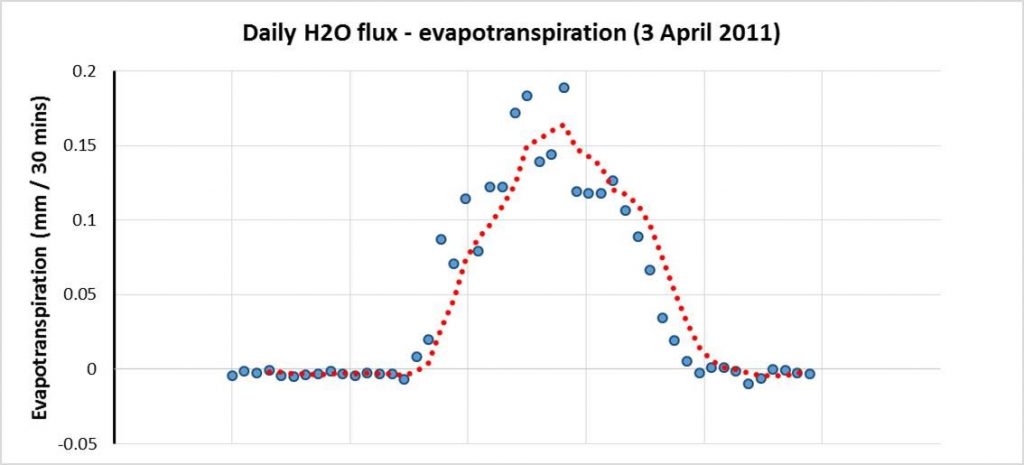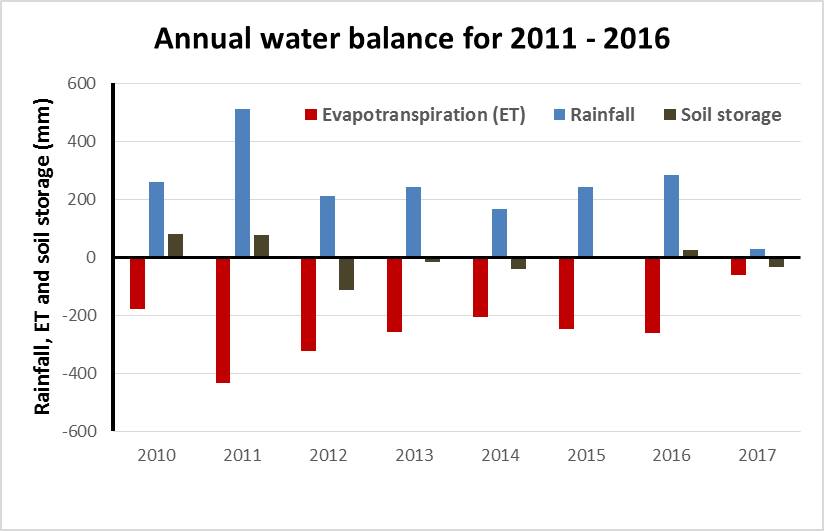CO2 cycles
The concentration of carbon dioxide (CO2) in the atmosphere at the OzFlux site is quite variable on a minute to minute timeframe. There are also daily and seasonal cycles in the variability. This variability is caused by:
- The continuous mixing of the air as it moves over and through the site, and
- The balance between the uptake of CO2 by green plants and the production of CO2 from soil and plant (ecosystem) respiration.
Daily
There is a daily cycle of CO2 uptake and release from the Calperum vegetation and soils, producing a daily change (flux) in the concentration of carbon dioxide (CO2) during a clear day.
- During the day, the plants are photosynthesising and are taking CO2 out of the atmosphere –shown as a negative flux on the Daily CO2 flux graph.
- At night, the soil is respiring and producing CO2 (which is adding to the CO2 in the atmosphere). The plants are not taking up CO2 then, and the addition of CO2 to the atmosphere from soil respiration is shown as a positive flux.
Seasonal & Longer-term
There are also seasonal temperature effects, and gradual (lagging) responses to rainfall in the activity of the vegetation.
- Despite the large variability there has been a very gradual upward trend in the concentration of CO2 during the 6 years of measurement (approximately 5 ppm, as shown by the dotted trend line).
- Occasional half hourly spike values of more than 420ppm have been recorded in the last months of 2016, with more consistent values of 405ppm for several hours during December of 2016 and in early April 2017. Higher hourly concentrations are occurring more often.
Water cycles
Daily
There is a daily cycle of evapotranspiration from the Calperum site, measured as the flux of water vapour coming from the soil and plants during a clear day.
- The main driver of evapotranspiration is the incoming energy from the sun.
- There is very little or no evaporation during the night time.
Seasonal
The Calperum site typically has hot summers and cooler winters, but rainfall is variable between years and across seasons within years – it can fall at any time.
Rainfall is characteristically episodic.
- Larger falls tend to be more common in summer. The most significant wet period during the sites operation was in the last quarter of 2010 and first quarter of 2011.
- During much of the year most rainfall events produce very small amounts of precipitation. When rain is recorded it has a daily average amount of just less than 4 mm with a median (most common) amount of only 1 mm.
Long-term Stores
In a wet period (August 2010 to April 2012) rainfall exceeded evapotranspiration and hence there was water stored in the soil profile (shown as positive values in the graph below).





